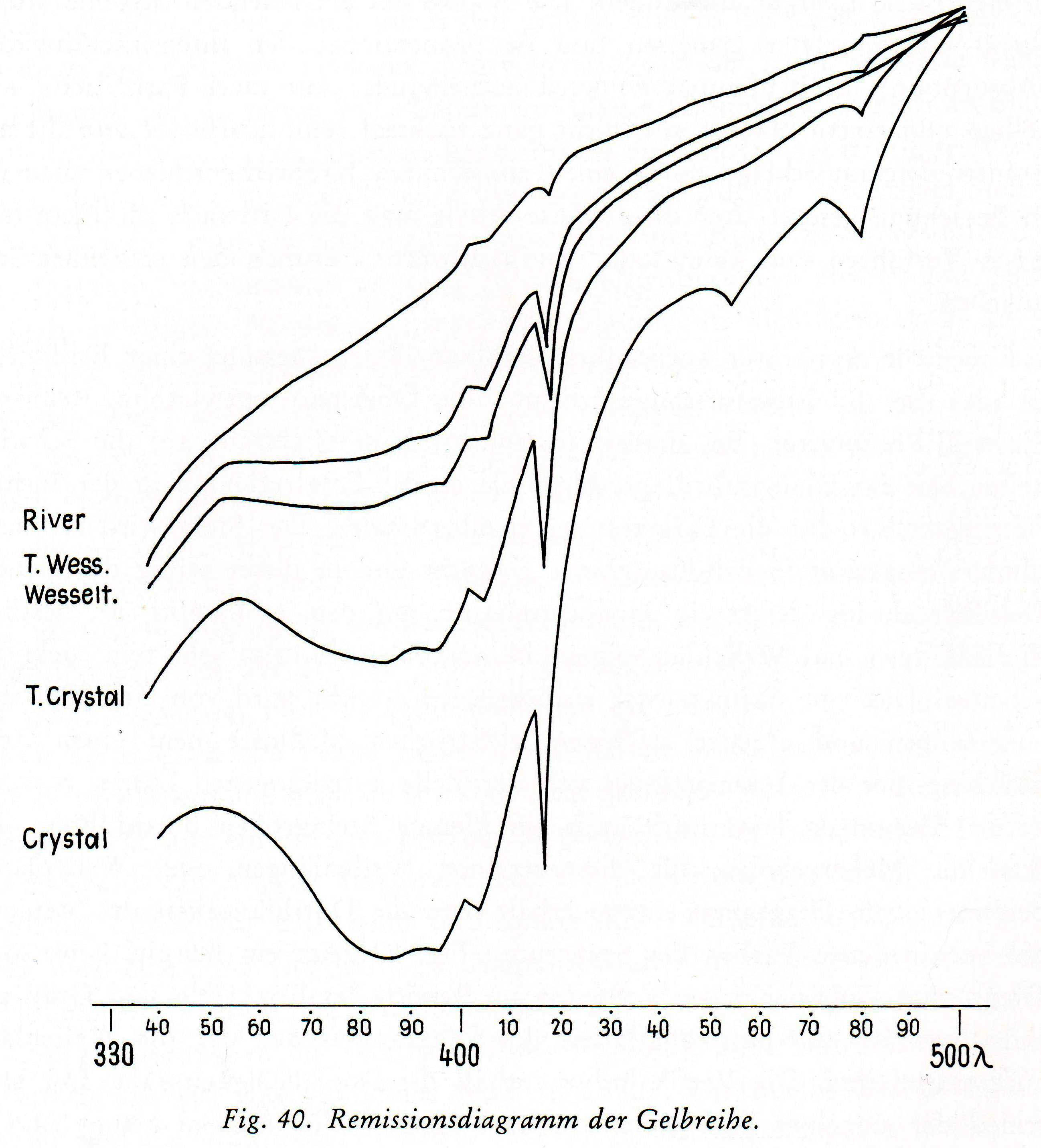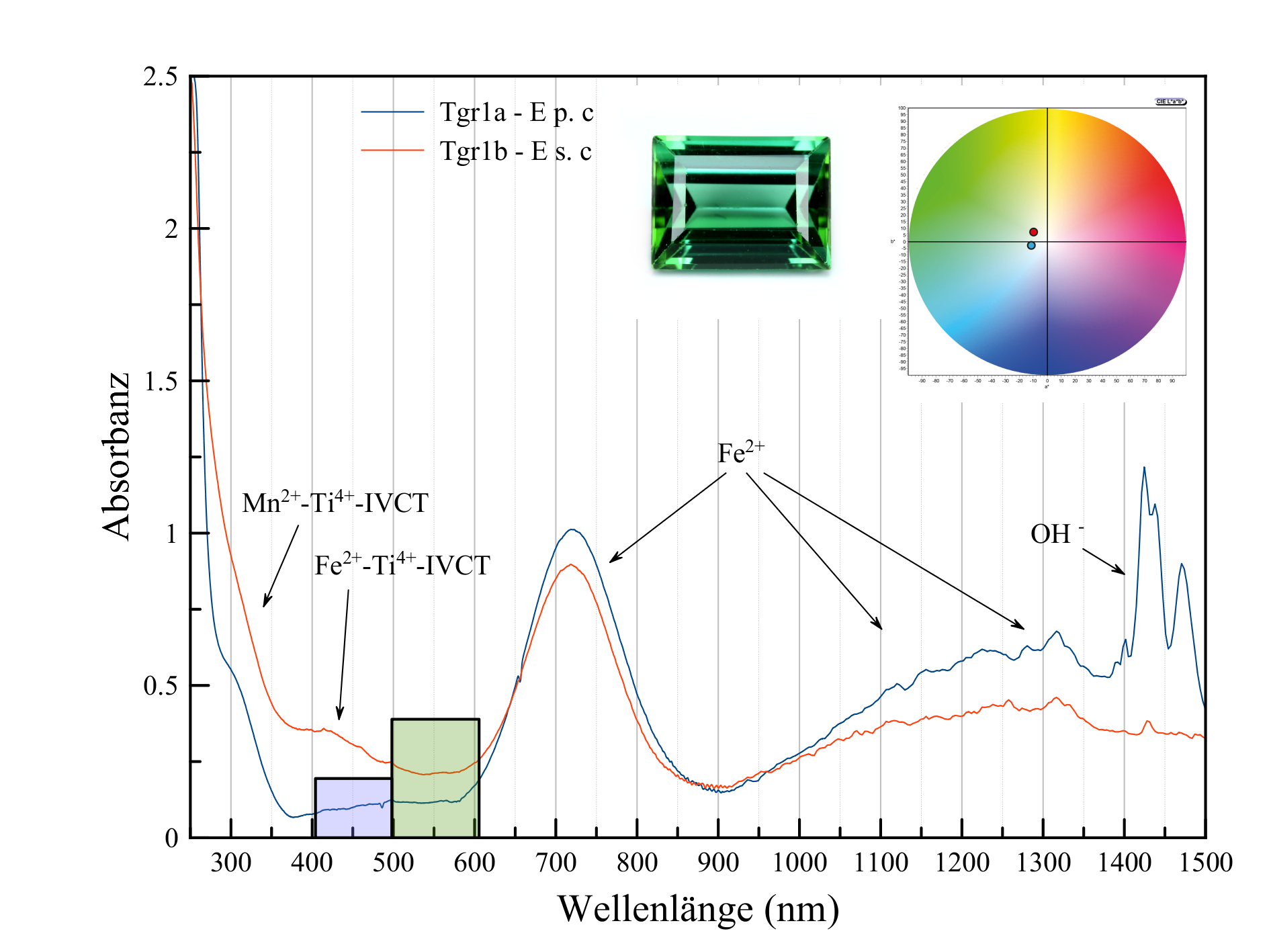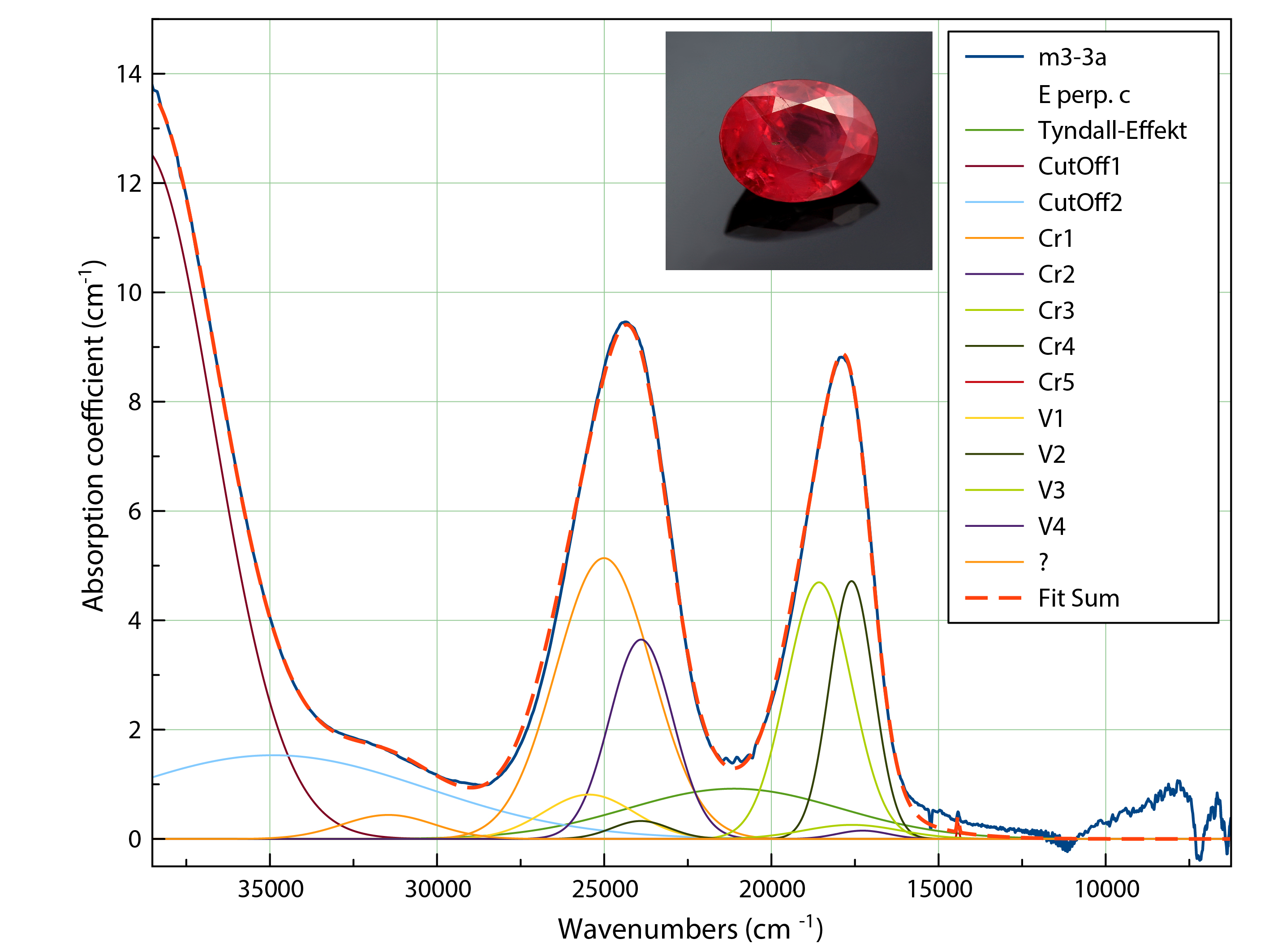As long as people have adorned themselves with gemstones, they have also tried to enhance the beauty of these natural products. Treatment options have been used for centuries to increase the attractiveness of gemstones. Especially during the 19th and 20th century, artificial property modifications were developed for quality optimization. Treatments are now used commercially to enhance gemstones worldwide.
Therefore, it is not surprising that the pioneers of gemstone research in Idar-Oberstein investigated the phenomenon of colour and its causes as well as the artificial changes of colour by using spectroscopic methods for a detailed identification of the processes during the early 1920s and 1930s.
From 1922 to 1923, the founder of the German Gemmological Association Georg O. Wild, inspired by Dr. Liesegang in Frankfurt, investigated the colour varieties of quartz and its potential to change after treatment, as well as the colour varieties of topaz and beryl. The results of these investigations were published. In 1927, studies were conducted in two important fields of gemmology and gemstone research: trace element analysis and spectroscopy.
 Illustration of the remission diagrams of diamonds of different colour grades in the book of Prof. Schlossmacher "Gemstones and Pearls".
Illustration of the remission diagrams of diamonds of different colour grades in the book of Prof. Schlossmacher "Gemstones and Pearls".
Prof. Dr. Karl Schlossmacher, who owed his interest in gemstones to Prof. Max Bauer (publisher of the famous textbook "Edelsteinkunde"), was commissioned in 1948 to establish a gemstone research institution in Idar-Oberstein. In 1955, the Johannes Gutenberg University of Mainz took over the management of the institute. Among the versatile projects in the field of gemmology, the studies on the colour causes and colour modifications of gemstones continue to play a major role. Many research results have been published and summarized in Schlossmacher's textbook "Edelsteine und Perlen". In this book, Schlossmacher also described a remission spectral photometer which was developed at the research institute in Idar-Oberstein for the quantitative measurement of a brilliants colour.
A further development of quantitative photometric measurement of the colour of diamonds was developed in 1969 by Dr. Godehard Lenzen, managing director of DGemG, who successfully introduced the first practical useable diamond photometer together with Manfred Eickhorst from Hamburg.
More research in colour and the colour enhancement of gemstones and their interpretation by spectroscopic methods combined with trace element analysis were conducted in the 1970s. In 1962 Prof. Dr. Hermann Bank, the later long-standing president of the German Gemmological Association lectured at the University of Heidelberg, initiating numerous studies in collaboration with Prof. Waldemar Berdesinski and later with Dr. Karl Schmetzer. One focus of the research was the description of colour causes in various gems of different occurrences as well as the possibility for colour modification. It is important to acknowledge the basic research on colouring agents such as chromium and vanadium as well as the colour causes and modifications in corundum, beryl and quartz.
Another important focus was the application of infrared spectroscopy in gemmology, which resulted in the development of a routine method for distinction between natural and synthetic amethyst as part of the diploma thesis of Dr.Thomas Lind, the current president of DGemG and chair of DSEF council.
During the mid-1980s, DGemG and DSEF endeavoured to promote further gemmology by institutionalizing research and provided the laboratory in Idar-Oberstein with scientific research equipment. This was completed after three projects for business-related research during 1986-1987, 1988-1989 and 1990- 1993 with the financial support of the Ministry of Economic Affairs of Rhineland-Palatinate. The scientific management was directed by Dr Ulrich Henn.
Within these projects, entitled "Changes in Properties, in Particular the Colour Enhancement of Gemstones, their Identification, and the Identification Characteristics of Syntheses", new research results were discovered and published. Particularly noteworthy is the first description of Paraiba tourmaline and the crystallographic and chemical interpretation of its colour causes and modification due to the presence of copper and manganese.
After the completion of the third research project, the DGemG started to support the gemstone research of the DSEF. In 1993, Dr Claudio C. Milisenda was hired as a research assistant and became the Manager and Director of the laboratory in 1996.
 Polarized absorption spectra of a green tourmaline with calculated positions in the CIELAB-colour circle measured by a modern spectral photometer in the DSEF German Gem Lab.
Polarized absorption spectra of a green tourmaline with calculated positions in the CIELAB-colour circle measured by a modern spectral photometer in the DSEF German Gem Lab.
In parallel with the development of DSEF as a modern laboratory which provides gemstone-reports of international standard, research has also continued together with the DGemG with the focus on colour and colour enhancement using modern scientific methods. The collaboration with the Institute for Gemstone Research of the University Mainz continues to be of importance. Noteworthy aspects of this collaboration include the application of complex research methods and the contribution of research projects in the form of diploma or master theses and dissertations. Fundamental research on the crystal chemistry of garnet (as part of the dissertation by DGemG president Dr Thomas Lind), tourmaline, quartz and many other minerals are also worth noting. Particularly, the studies on the crystal chemistry of quartz and the detailed description of colour causes and colour modifications, demonstrate the development of gemstone research of the DGemG and DSEF. A variety of research in this area has been conducted in the early work of Wild and Schlossmacher during the 1920s, the extensive research at the University of Heidelberg by Bank and Schmetzer during the 1970s and 1980s, and the research projects of Dr Henn in cooperation with Prof Schultz-Güttler from the University of Sao Paulo in Brazil today.
 The o-spectrum of a ruby from Myanmar has been decomposed mathematically by spectral fitting.
The o-spectrum of a ruby from Myanmar has been decomposed mathematically by spectral fitting.
Spectroscopical analyses of corundum and diamond, respectively, do also form major topics of current research within ongoing dissertation theses of Tom Stephan (DGemG) and Stefan Müller (DSEF) in cooperation with the University of Mainz.
This article was first published in a special programme issue for the 50-years anniversary of the DSEF German Gem Lab in 2019.



